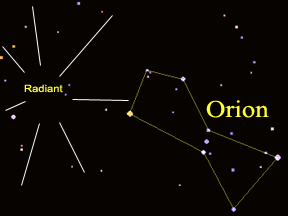Interactive Comet Animation
The interactive animation (below) shows some things about how comets work. Click the "play forward" button to make the comet move around in its orbit. You can make your own "custom comet" by adjusting the orbit size and the eccentricity (how "oval-shaped" the orbit is) of the comet's orbit. Click the "Closeup" tab to get a zoomed-in view of the comet. Click the "Pick Comet" tab if you want to look at some actual comets.
Can you make a comet with a really long tail? How long do comets take to orbit the Sun? If you want to find out more about comets, there is more information further down on this page.
You will need to have the latest version of the Flash player to see this animation.
|
|
Things you may have noticed:
- A comet's tail gets longer when it is close to the Sun. Heat from the Sun melts (actually sublimates) the ices that a comet is mostly made of. The comet's tail is made of material from the comet; gas from the ices and dust that is mixed in with the ice.
- A comet has two tails. The white one is made of dust. The blue one is ionized gas. Both point roughly away from the Sun. The solar wind and radiation pressure of light from the Sun "blow" them outward.
- There are two major factors that describe a comet's orbit: the size of the orbit (technically, its "semi-major axis") and the eccentricity. The size is like the radius of a circle. The eccentricity is tells how "oval-shaped" the orbit is. A small eccentricty means the orbit is roundish; a circle has an eccentricity of zero. A large eccentricity (close to one, such as 0.8 or 0.9) means the orbit is a very long oval. Halley's Comet has a high eccenticity.
- If a comet has an orbit with a high eccenticity, it moves much faster when it is near the Sun than when it is far from the Sun.
- If a comet has a large orbit, it takes a long time to go around the Sun. Some comets are "short-period" comets that take five or ten years to complete an orbit. Some comets are "long-period" comets that take decades, centuries, or millenia to orbit the Sun. Long-period comets originally came from the Kuiper Belt or the Oort Cloud.













